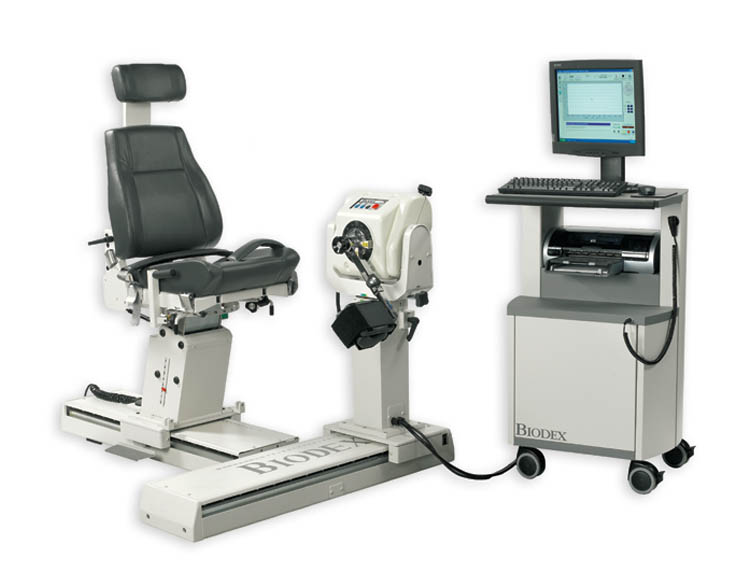- Physical Medicine Home
- Products
- Programs
- Applications
- Find a Clinic
- Blog
- Events
- Education & Training
- In The News
- Press Releases
Physical Medicine Blog
< back to resultsOptimizing knee joint mobilization – back to normal ROM
February 19, 2014
 |
| System 4 Pro™ |
John Cavanaugh, PT/ATC, Senior Clinician at the Sports Medicine Center at the Hospital for Special Surgery in New York City, has been using dynamometers for about 30 years. After all this time, he still finds new ways to apply the device to solve clinical problems for his patients.
Using a Biodex System 4, Cavanaugh has found a way to combine the System’s Passive Mode with joint mobilizations to steer a complicated, stiff knee back to normal ranges of motion. He used this technique as part of his quest to get his patient back out on the basketball court.
Cavanaugh, who has always been a fan of the Passive Mode, is now also a fan of the System’s “Hold” button. For this particular athlete, knee flexion was becoming increasingly difficult to attain as they progressed toward the end ranges of knee flexion; one of the standard techniques is to use anterior/posterior knee mobilizations. In Cavanaugh’s hands, it seemed necessary to perform these activities in combination with passive range of motion.
To administer this treatment:
- Set the device on a slow speed as it moves toward the end ranges of flexion.
- Make sure you use moderately high torque limits so the device can push through some of the stiff tissue.
- Use the “Hold” button found on the dynamometer head to freeze the position and perform anterior and posterior tibial/ femoral glides to stress the stiff tissues, as Cavanaugh did. He knew exactly where 90 degrees was because the device has a live goniometer, which comes in handy in these situations.
- Use the “Pause” setting to allow for a continuous stretch at the end range of motion, which contributes to the deformation of the stiff tissue in question.
Over time, Cavanaugh was able to solve a serious issue for his patient, moving him down the road to rehabilitation, and eventually back to the hard court.
Category:
Physical Medicine




